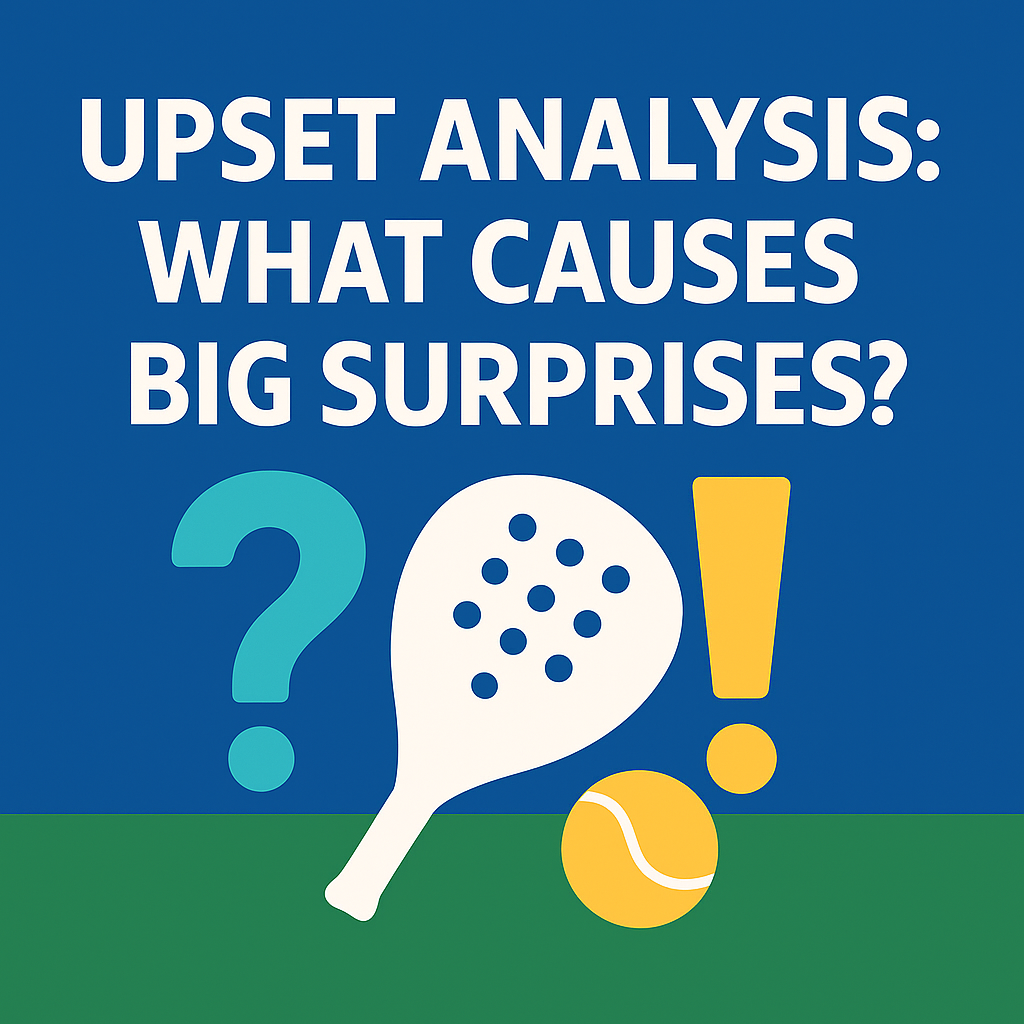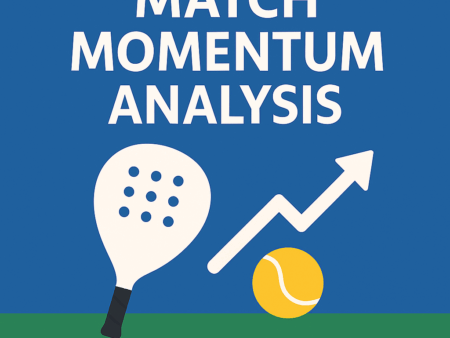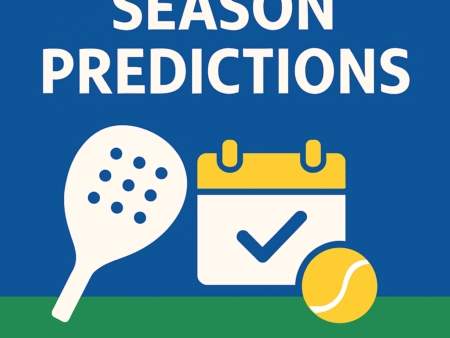
Padel produces more upsets than most racket sports, including tennis, table tennis, and badminton. The combination of partnerships, momentum swings, tactical mismatches, and conditions creates a uniquely volatile environment where underdogs win frequently.
This page explains why upsets happen, the patterns behind them, and how bettors can predict them before they occur.
🟦 Why Upsets Happen More Often in Padel
Several structural factors make padel upset-prone:
✔ Doubles-Only Format
Four players → more variables → more variance.
✔ Partnership Chemistry
Teams with poor chemistry collapse easily.
✔ Momentum Swings
Golden Points and long rallies shift momentum instantly.
✔ Conditions Dependence
Wind, glass walls, lighting, and court speed matter hugely.
✔ Tactical Mismatches
Ranking ≠ stylistic advantage.
✔ Physical Load
Three-set matches create fatigue-based collapses.
These factors combine to create regular opportunities for underdogs.
🟩 The 7 Most Common Causes of Upsets
Below are the primary drivers behind most major surprises.
🔵 1. Court Conditions Favour the Underdog
The single biggest cause of upsets.
Examples:
- Slow indoor courts favour defensive teams.
- Wind neutralises aggressive left-side players.
- Fast outdoor courts punish lob-heavy teams.
A team ranked #20 can beat top-5 opponents if the surface suits them.
🟢 2. Tactical Mismatches (Style Clash)
Rankings don’t reflect style advantage.
Examples:
- Defensive lobbing team frustrating attackers.
- Glass specialists beating players weak off the wall.
- Right-side technicians exposing left-side attackers.
If the underdog’s style naturally beats the favourite’s → big upset risk.
🟡 3. Fatigue From Previous Matches
Padel is extremely physically taxing.
Fatigue factors:
- Long 3-set battles
- Hot/humid outdoor tournaments
- Back-to-back matches
- New partnerships over-communicating
Tired favourites underperform significantly.
🟠 4. Favourites Starting Slow in Early Rounds
This is common in Premier Padel Majors.
Top seeds:
- Use early rounds to adjust to conditions
- Experiment tactically
- Save energy
Underdogs play at maximum intensity → prime upset zone.
🔴 5. Mental Fragility at Golden Points
Golden Points decide 20–30% of games.
Teams with weak pressure stats lose close matches regardless of ranking.
Red flags:
- Golden Point win rate < 45%
- Poor break point conversion
- Collapse under scoreboard pressure
Strong mental teams pull off more upsets.
🟣 6. New or Unstable Partnerships
Partnership dynamics drive padel performance.
New teams often:
- Lack communication
- Misjudge centre-court responsibility
- Struggle with switching and covering
Experienced underdogs exploit these gaps.
🟤 7. Hidden Injuries or Physical Limitations
Players often hide injuries until forced to retire.
Warning signs:
- Sudden drop in mobility
- Overuse of lobs to avoid physical rallies
- Weak smash power
Underdogs capitalize on any physical weakness.
🟥 Deep-Dive: How Upsets Actually Play Out
Most upsets follow a similar script.
Step 1 — Underdog wins long rallies early
Momentum builds.
Step 2 — Favourite gets frustrated
Starts forcing low-value shots.
Step 3 — Conditions amplify the mismatch
Wind, humidity, or slow courts help underdogs.
Step 4 — Golden Points swing set(s)
Often the deciding factor.
Step 5 — Favourite’s confidence collapses
Underdog takes control.
🟧 The 10 Best Indicators an Upset Is Coming
- Favourite recently played a 3-set match.
- Conditions favour underdog style.
- Underdog’s form better in last 10 matches.
- H2H history surprisingly close.
- Favourite shows weak Golden Point stats.
- Underdog wins high % of long rallies (>10 shots).
- New favourite partnership still unstable.
- Favourite struggles outdoors/indoors (wrong surface).
- Underdog left-side player in strong form.
- Betting markets slow to adjust overnight.
If 4+ indicators appear → legitimate upset risk.
🟫 Best Markets for Upset Betting
You don’t always need the underdog ML.
✔ Set Handicap (+1.5)
✔ Game Handicap (+2.5 / +3.5)
✔ Over 22.5 or Over 23.5 games
✔ Underdog to win one set
✔ Live betting after first break
These markets reduce risk while capturing value.
🟩 Example Upset Scenario (Template)
Match:
Team A (#4) vs Team B (#17)
Indicators:
- Outdoor wind (22 km/h) → favours Team B’s defensive style
- Team A fatigued from 3-setter
- Golden Point stats weak
- Team B strong in long rallies
Result:
Team B wins 6–4, 3–6, 7–5.
Betting Takeaway:
Value was in Over 22.5 + Team B +2.5 games.
🟦 SEO Focus of This Page
Ranks for:
- “padel upset analysis”
- “padel upsets explained”
- “why do upsets happen in padel”
- “padel surprise results”
High value for bettors seeking deeper insight.
🟩 Summary
Upsets in padel are predictable when you understand:
- Conditions
- Tactical matchups
- Fatigue
- Mental strength
- Partnership stability
- Style–and surface–based advantages
This page gives bettors a complete framework for identifying surprises before they happen.
Next: Page 14 — Match Momentum Analysis (Simple Guide).


